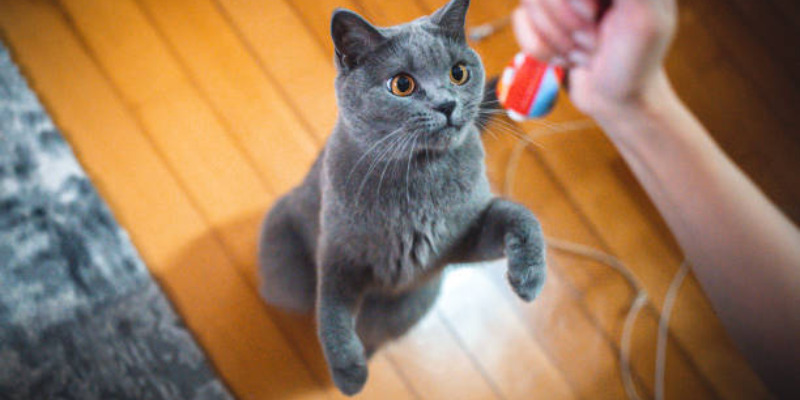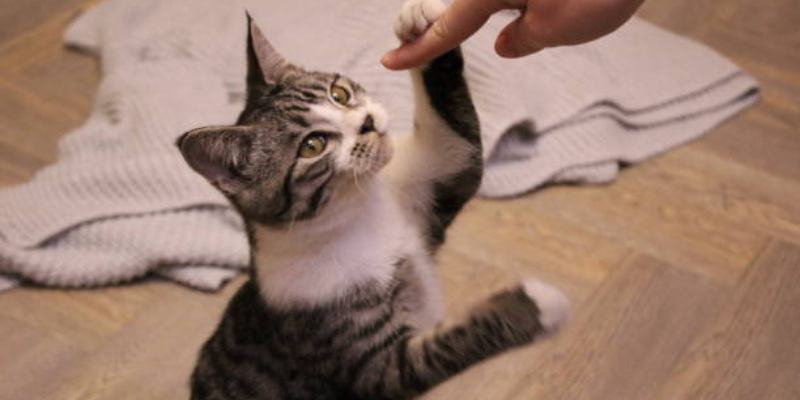Clicker Training 101: Teach Your Cat Tricks Like a Pro
I'm a cat lover who has spent the last few years learning how best to clicker-train my stubborn but sweet tabby, Mr. Whiskers. Let me tell you: if I can get him to high-five and spin in circles, you can also get your cat to do tricks. Cats aren't as "untrainable" as many believe; they require a different method. That's where clicker training can help. "It's like you're speaking this little secret language that enables you to get closer to your cat while showing them this cool stuff. Do you think you're ready to become a cat-training master? Let's dive in.
What Is Clicker Training, Anyway?
The concept is straightforward: When your cat does something you want, you click and give a treat. They learn that the click means "good job!" and then repeat those behaviours for rewards. It's built on operant conditioning, a pompous saying, "Do more of the stuff you reward."

You can consider the clicker a camera shutter that "captures" the moment your feline gets it right. This helps your cat learn to go faster since it knows precisely what it's being praised for. Dogs are often trained with clickers, but cats respond well. Why? Because it's short, simple, and involves their favourite thing: snacks!
Why Clicker Train Your Cat?
You may think, "My cat doesn't need tricks — they're perfect." And you're right! But clicker training isn't merely good for the show. It has real benefits:
Builds Trust
Training sessions are just that, bonding. When your feline learns you are giving out fun rewards, they will trust you more and be closer to you.
Mental Exercise
Cats get bored quickly. Teaching tricks stimulates their minds, which may lead to less mischief (like tipping over your favourite vase).
Makes Vet Visits Easier
Have you ever tried giving a cat a pill? If your cat is trained to "sit" or "come," visits to the vet are less stressful for you both.
Helps Shy Cats Shine
Training can help rescue cats or timid kittens before they become confident. It provides them with a sense of control and achievement.
What You’ll Need To Start
Don’t be concerned—you don’t need high-tech equipment. Here’s the basics:
A Clicker: These are inexpensive (less than $5 online) and resemble a keychain with a button. If you don't have one, try a pen or tongue click!
Use High-Value Treats: Something extra tasty, such as diced chicken, fish flakes, or store-bought cat treats. The smellier, the better.
A sense of patience: Cats learn at their own pace. Some days, your cat can master a trick in 5 minutes. On other days, you'll get blank stares like you're talking Klingon. That's normal!
Step 1: Charge The Clicker
So before you start teaching tricks, your cat has to know that click = treat. This is known as “charging the clicker.” Here’s how:
Find a quiet room and sit with your cat.
Do it once, then treat them immediately after.
Repeat 5–10 times.
Follow this 2–3 times daily for a few days. You'll know they've connected when they look at you expectantly after the click.
Pro Tip: Always click before you give them the treat. Timing is everything!

Step 2: Teach Your First Trick — “Look At Me”
Start with something simple. Hold a treat near your face and wait. As soon as your cat looks at you, click and treat. With enough repetitions, they’ll understand that looking at you = reward.
When they have that down, cue them up with something like "Look at me!" or pointing to your eyes. Eventually, they'll respond only to the cue—no treat necessary.
Step 3: Get On The Level – Target Coaching
Train your cat to touch their nose to a specific object (like a spoon or finger). This technique, known as "target training," sets the basis for more advanced tricks.
Position the target a few inches away from your cat’s face.
Click and treat when they sniff or touch it!
You can slowly push the target further away or to the side.
Once they’re a pro, use the target to lead them into positions like “sit” or “spin.”
Step 4: The Grail – High Five!
Yes, cats can high-five. Here’s how:
Keep a treat in your palm with your fingers closed.
And wave your hand close to their paw. The majority of cats will swat your hand to receive the treat.
Click and treat when they lift their paw.
Increase how high you raise your hand slowly until they provide a full paw up.
Add the cue “High five!” and praise when they do so on command.
It took my cat, Mr. Whiskers, two weeks to get the hang of this. Now, he does it each morning to "ask" for breakfast.

Advanced Tricks To Try
Once your cat has the basics down, be creative!
Go to Your Spot: Set up a “home base,” a mat or bed. Praise them for doing nothing — for sitting or lying there.
Spin in Circles: Lead them with a treat in a circle. You do so when clicking them along the path.
Fetch: Throw a toy, then, when they return with it, click and treat. (Fair warning: some cats enjoy this; others will eyeball you as if you’re nuts.)
Ways To Troubleshoot Common Problems
My cat ignores me. Sessions should be short (5–10 minutes), so try again later. Some cats have very short attention spans!
They fear the clicker. To calm them down, Use a quieter sound (like a pen click) or muffle the clicker with a towel.
They only work for treats. Gradually phase out the treats. Begin by providing a treat with every third click, then everybody's fifth, and so forth.
Clicker training isn't about forcing your cat to perform tricks — it's a form of teamwork. Embrace the small successes, and never punish failure. You'll be surprised by what your cat can grasp with time and repetition.









